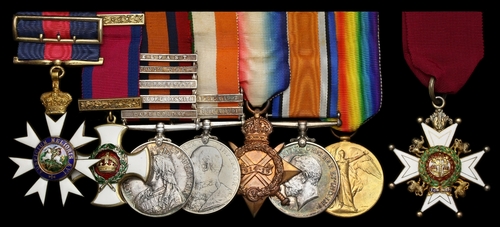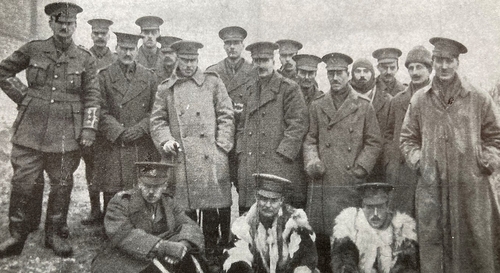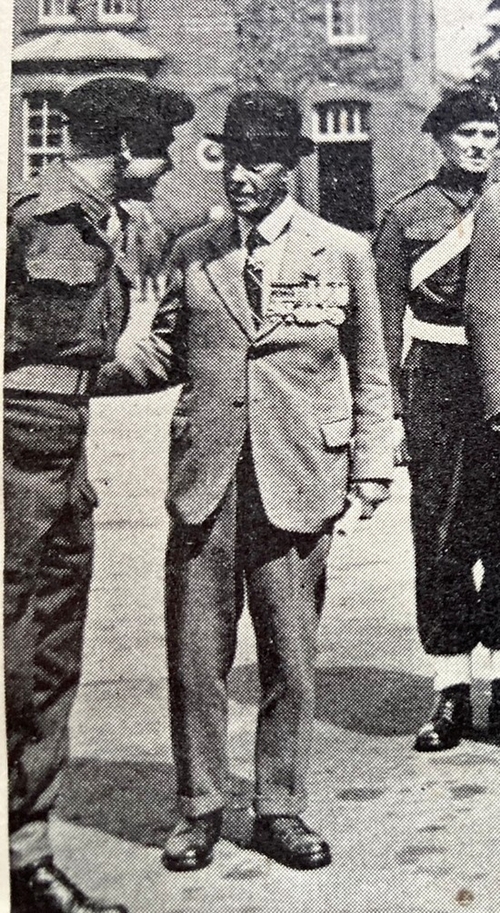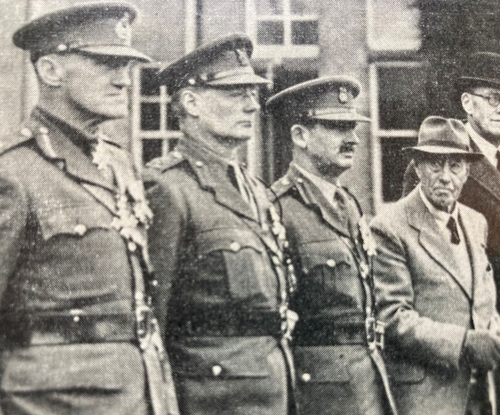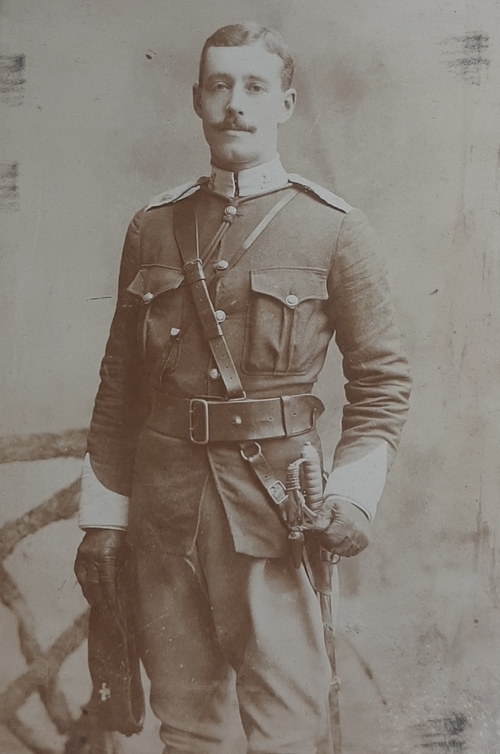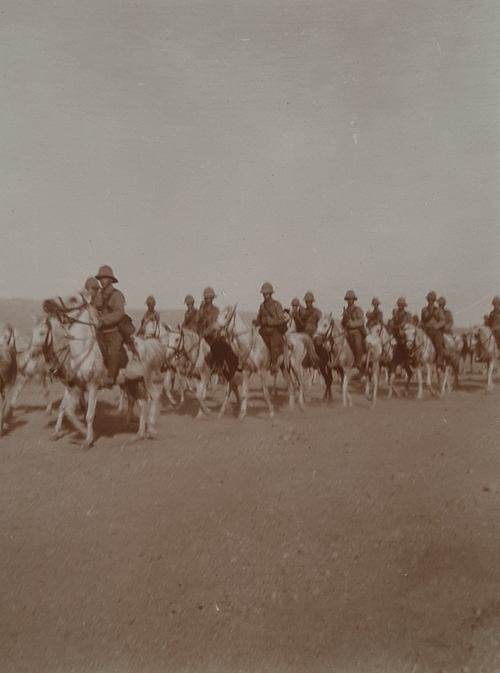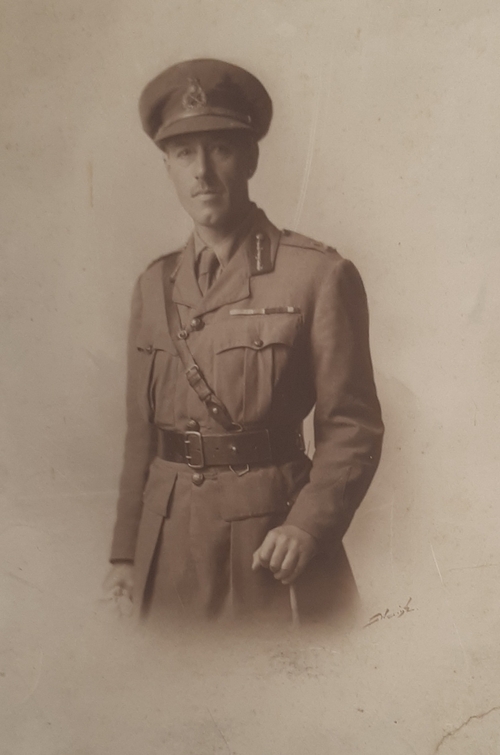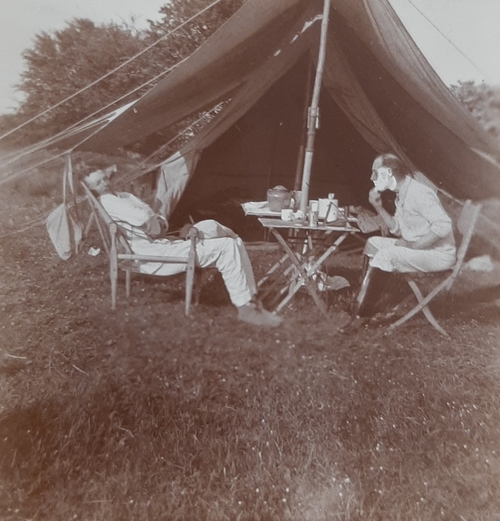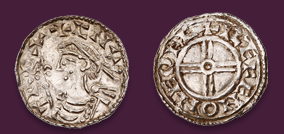Auction: 25002 - Orders, Decorations and Medals
Lot: 123
A fine Great War Brigade Commander's C.B., Battalion Commander's C.M.G., Boer War D.S.O. group of eight awarded to Brigadier-General R. J. Bridgford, Shropshire Light Infantry, late Manchester Regiment
Lucky indeed to survive being jumped by 200 Boers disguised in khaki in November 1901 - in which 15 of his mounted infantrymen were shot down and 37 wounded - Bridgford was himself wounded during his subsequent command of the 2nd Shropshire Light Infantry on the Western Front
Having then risen to Divisional Command as a Temporary Lieutenant-General, he was ordered home after the German Spring Offensive in 1918, an unhappy outcome which he summed up thus:
'Later in May 1918 I got the order of the Boot or Bowler Hat for carrying out orders sent by the Corps Commander during the Bosch push of 1918. He himself with his staff having fled. The Corps Commander commonly went by the name of Foxy Haldane'
The Most Honourable Order of the Bath, C.B. (Military) Companion's neck Badge, silver-gilt and enamel, in its Garrard & Co. case of issue; The Most Distinguished Order of St. Michael and St. George, C.M.G., Commander's breast Badge, silver-gilt and enamel, with swivel-suspension and riband buckle; Distinguished Service Order, V.R., silver-gilt; Queen's South Africa 1899-1902, 5 clasps, Cape Colony, Defence of Ladysmith, Orange Free State, Laing's Nek, Belfast (Capt. R. J. Bridgford, D.S.O., Manch. R.), two of the clasps are tailor's copies; King's South Africa 1901-02, 2 clasps, South Africa 1901, South Africa 1902 (Capt. R. J. Bridgford, Manch. Rgt.); 1914-15 Star (Lt. Col. R. J. Bridgford, D.S.O., Shrops. L.I.); British War and Victory Medals (Maj. Gen. R. J. Bridgford), mounted as worn where applicable, enamel work chipped in places on the C.M.G. and D.S.O., otherwise generally good very fine (8)
Provenance:
Sotheby's, June 1997.
C.B. London Gazette 1 January 1918.
C.M.G. London Gazette 23 June 1915.
D.S.O. London Gazette 19 April 1901:
'In recognition of services in operations in South Africa.'
Robert James Bridgford was born on 10 March 1869, the son of Sir Robert Bridgford K.C.B., D.L., J.P. of Herefordshire, and was educated at Charterhouse School, Godalming, Surrey. Following a spell in the Militia, he joined the Manchester Regiment as a 2nd Lieutenant in December 1889 and was advanced to Lieutenant in December 1891 and to Captain in January 1898.
Boer War - P.O.W. - D.S.O.
Subsequently posted to South Africa, he quickly saw action at Lombard's Kop and was present at the defence of Ladysmith, including the action fought on 6 January 1900. Following the relief of the town, he served in the operations in Natal in March-June 1900, including the action at Laing's Nek (6-9 June), as well as engagements in the Transvaal, among them Belfast (26-27 August) and Lydenberg (5-8 September). He was mentioned in despatches (London Gazette 8 February 1901, refers) and awarded the D.S.O.
Having then been attached to the 1st Johannesburg Mounted Rifles, he was given command of a company of Mounted Infantry in April 1901. And it was in this capacity that he was lucky to survive a close encounter with 200 Boers at Holland Farm on the Kaffir Spruit on 18 December 1901. On that occasion, the enemy disguised themselves in khaki and formed up in regular order with officers out front, exactly in the manner of British troops. And since a British force was expected in the area, Bridgford and his men were none the wiser. But that all changed when the Boers closed to within 40 yards of his unit, for, without the slightest notice, they leaped from their horses and opened a murderous fire, the first volleys practically accounting for the entire company - fifteen men lay dead and a further 38 wounded. Those who survived were taken prisoner.
Advanced to Major in February 1904, Bridford transferred to the Shropshire Light Infantry in September 1905, following which he served as Commandant, Mounted Infantry in Egypt. But by the outbreak of hostilities in August 1914, he was serving as a Lieutenant-Colonel in command of the 2nd Shropshires, and it was in that capacity that he was embarked for France in December 1914.Great War - wounded - senior command
The battalion first came under heavy fire in the Battle of St. Eloi in March 1915, the regimental history noting that on one occasion Bridgford's H.Q. - located by a derelict motor bus - was so severely shelled that it had to be abandoned: 'the whole headquarters, including the C.O. and R.S.M., were forced to retire. They did this in perfect order, a splendid example of how to retire under fire!'
In April, the battalion suffered heavy casualties in the Battle of St. Julien, where its losses amounted to 11 officers and 153 other ranks killed, wounded and missing. Next up was the Battle of Frezenburg Ridge, yet another costly affair, where the battalion suffered losses of seven officers and 282 other ranks. Bridgford, who was among the wounded, was evacuated to a casualty clearing station, but rejoined the battalion a few days later at Busseboom.
On 28 May 1915, the German launched 'a great cloud gas attack' on Bellewarde Ridge, followed by a major infantry assault. Once again, the 2nd Shropshires were on the receiving end, suffering nearly 200 casualties. The battalion was now moved to quieter climes at Armentieres, where Bridgford was likely informed of his pending award of the C.M.G.
In mid-July 1915, he was appointed Temporary Brigadier-General with command of 18th Infantry Brigade, in which role he remained actively employed until taking a period of leave in May 1916. On returning to France, he served as Commanding Officer of the 141st Brigade in July-August 1916, prior to returning to his old command, 18th Infantry Brigade, in the period August 1916 to August 1917.
Awarded the C.B., he was rested back in the UK before once more returning to France in March 1918 as a Temporary Major-General in command of 31st Division, just in time for the Somme and Lys battles of March-April 1918. Here, then, as cited above, the moment of his downfall, for although he transferred to the command of the 32nd Division in May 1918, he was ordered home soon afterwards.
In addition to his awards of the C.M.G. and C.B., Bridgford was five times mentioned in despatches in the Great War (London Gazettes 22 June 1915; 15 June 1916; 4 January, 15 May and 11 December 1917, refer).
On being placed on the Retired List in 1922, he returned to the family home in Herefordshire where, in common with his father, he became a D.L. and J.P.
The General - who retained a strong interest in the fortunes of the Shropshires - died in April 1954; Sold with a quantity of original documentation, including the recipient's C.B. and C.M.G. warrants, the latter with related forwarding letter; his M.I.D. certificates (4), dated 31 May 1915, 30 April and 13 November 1916, and 7 November 1917; approximately 80 career and / or family photographs, and an exercise book with his handwritten account of his time in India in 1920, 17pp.
Also sold with his silver vesta box, with hallmarks for Birmingham 1897, the lid with engraved initials and the date 'March 23rd 1898'; a K.S.L.I. badge and his Boer War presentation chocolate tin, and a Knight Templar's breast star, silver and enamel, with hallmarks for London, 1883, this last contained in a leather case.
For the recipient's dress miniatures see Lot 155.
Subject to 20% VAT on Buyer’s Premium. For more information please view Terms and Conditions for Buyers.
Sold for
£4,200
Starting price
£1200

